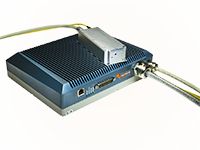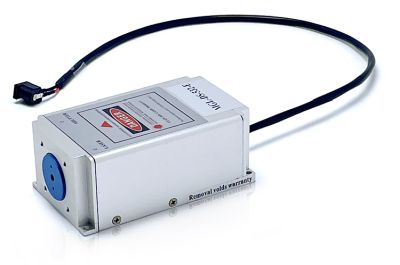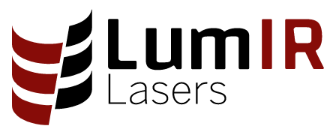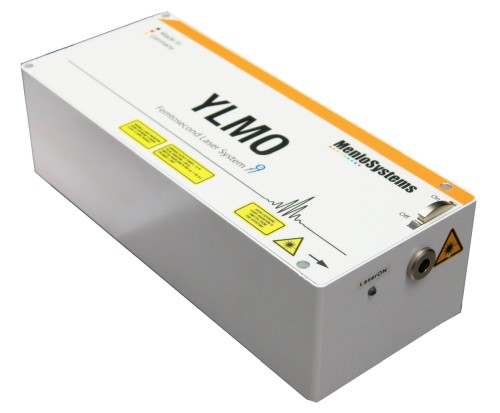medical lasers (original) (raw)
Definition: laser systems used for medical applications
Category:  laser devices and laser physics
laser devices and laser physics
- light sources
- lasers
* solid-state lasers
* diode-pumped lasers
* lamp-pumped lasers
* distributed feedback lasers
* dye lasers
* gas lasers
* free-electron lasers
* radiation-balanced lasers
* cryogenic lasers
* visible lasers
* eye-safe lasers
* infrared lasers
* ultraviolet lasers
* X-ray lasers
* upconversion lasers
* Raman lasers
* high-power lasers
* multi-line lasers
* narrow-linewidth lasers
* tunable lasers
* pulsed lasers
* ring lasers
* seed lasers
* ultrafast lasers
* industrial lasers
* scientific lasers
* alignment lasers
* medical lasers
* space-qualified lasers
* miniature lasers
* OEM laser modules
* lasers for material processing
* lasers for quantum photonics
* lasers for Raman spectroscopy
* (more topics)
- lasers
Related: laserslaser applications
Page views in 12 months: 678
DOI: 10.61835/mn7 Cite the article: BibTex BibLaTex plain textHTML Link to this page! LinkedIn
Content quality and neutrality are maintained according to our editorial policy.
📦 For purchasing medical lasers, use the RP Photonics Buyer's Guide — an expert-curated directory for finding all relevant suppliers, which also offers advanced purchasing assistance.
Contents
What are Medical Lasers?
There are various kinds of lasers which are applied for medical purposes. In most cases, they essentially do a kind of laser material processing, just on biological materials. In a few cases, laser light is used in other ways, for example for triggering photochemical reactions.
Lasers are not only used for medical therapies, but also for diagnostic purposes and for medical research. For example, there are methods of ocular imaging with optical coherence tomography (which may involve wavelength-swept lasers), laser microscopy and laser spectroscopy, which all can be useful for planning treatments. Optogenetics is another important field in medical research which profits from laser technology.
Besides lasers, medical laser systems may contain various other kinds of photonics and optics technology, e.g. frequency converters, photodetectors for monitoring purposes, cameras, and laser beam delivery systems.
Generally, medical laser systems need to fulfill relatively strict conditions. In particular, they need to be highly reliable, since a failure during a medical operation may have serious consequences. Their performance parameters must be well reproducible and precisely monitored during operation. Various legal conditions (e.g. fulfilling certain standards), which can substantially vary between countries, must be fulfilled before such lasers can be applied.
The following sections describe some typical applications of medical lasers. Note, however, that the article cannot completely cover the huge field of medical applications, with many new applications being under development.
Lasers in Ophthalmology
Ophthalmology, i.e., the branch of medicine and surgery dealing with the diagnosis and treatment of problems of the eye, is a classical field of medical laser applications. This is essentially because the eye, including essential inner parts like the retina (the light-sensitive region), is well accessible by light, while other approaches e.g. to the retina are difficult.
Vision Correction
A particularly important field is vision correction because this affects so many people. Essentially, an eye often has an inappropriate value of the dioptric power of its lens, which is outside the range of accommodation. One form is myopia (short-sightedness or near-sightedness), where the dioptric power is too high for forming sharp images of distant objects, but more appropriate for nearby objects. The opposite is hyperopia (far-sightedness), where the dioptric power is too small. Also, there can be problems with astigmatism, i.e., with different dioptric power in the vertical and horizontal direction. Without other treatment, patients then require appropriate corrective glasses. With certain types of refractive surgery, including methods of laser surgery, the dioptric power can be modified — not by affecting the lens, but by changing the shape of the cornea (the outer part of the eye).
An early method, applied already in 1987, is photorefractive keratectomy (PRK). Here, an excimer laser was used to reshape the cornea; the emitted ultraviolet light exhibits strong absorption in the tissue, so that it affects only the outermost layer. The top layer (called corneal epithelium) was completely lost in this process and had to be re-created during the healing process, which took several days and involved an increased risk of infections.
An improved and well-established method is LASIK. Here, one first uses mechanical means (a microkeratome) to produce a flap, i.e., to cut out a thin layer from the cornea, leaving only a small bridge at one side. The flap can then be folded away. Thereafter, with an excimer laser one can do the remodeling (reshaping) of the cornea. Afterwards, the flap is returned to its original position, where it can connect with the lower lying tissue again within a few days.
A further improved method for laser vision correction is called femtosecond LASIK. In contrast to traditional LASIK, the flap is generated by applying a fast sequence of thousands of tightly focused ultrashort laser pulses to points slightly below the surface of the cornea. The laser may be a mode-locked fiber laser in conjunction with a fiber amplifier system. Thereafter, the same procedure for cornea remodeling with an excimer laser is applied, just as in traditional LASIK.
With such laser surgery methods, it is possible to correct particularly myopia (even quite strong forms), but also hyperopia and astigmatism. A possible challenge is that it is not perfectly predictable how the dioptric power will change with time after the operation.
Treating Retinal Detachment
Lasers can also be used to treat retinal detachment — a condition where the retina could be completely detached, leading to blindness. With laser pulses sent to spots on the retina around the retinal tear, which may not be essential for seeing, one can cause photocoagulation and thus prevent further detachment.
Lasers in Dermatology
The skin is also a particularly accessible part for laser radiation, and various laser treatment methods have been developed for treatment of different skin conditions. For example, vascular and pigmented lesions can be treated, also scars and wrinkles. Further, lasers are frequently applied for the removal of tattoos and for hair removal.
In photodynamic therapy, some photosensitizer substance is injected into the blood stream and is locally activated through laser irradiation such that it becomes toxic, inducing cell death. Such methods can be used for treating not only skin cancer, but also prostate cancer, various infections and acne.
In dermatology, one frequently uses Q-switched lasers at various wavelengths, sometimes in conjunction with frequency doubling, but in other cases quasi-continuous-wave operation or continuous-wave operation are needed.
For some treatments e.g. of skin lesions, it is important to operate in appropriate wavelength regions where haemoglobin exhibits strong absorption. For such reasons, a wide range of different laser lines are used — for example:
- 532 nm from frequency-doubled YAG lasers
- 568 nm from krypton ion lasers
- 694 nm from ruby lasers
- 755 nm from alexandrite lasers
- 1064 nm from Nd:YAG
- 2.94 μm from Er:YAG lasers
- 10.6 μm from pulsed or continuous-wave CO2 lasers
Lasers in Dentistry
A common application is the preparation of cavities in the context of curing caries. This can be done with short pulses from a free-running pulsed Er:YAG laser. Compared with conventional drilling, this procedure may incur less pain.
There are various other laser applications in dentistry, which concern either the hard tissue (teeth) or soft tissues, e.g. for exposing unerupted or partially erupted teeth.
Lasers in Urology
A popular method is the treatment of benign prostatic hyperplasia, which causes problems for many men. There are endoscopes containing optical fibers which allow minimally invasive operations, where high-power laser light e.g. from laser diodes is used to ablate tissues. Compared with open operations, there are reduced risks of complications, and the recovery of the patient is quicker.
Laser lithotripsy has been developed for removing stones in the urinary tract. Different microscopic mechanisms can be used for destructing stones with intense laser pulses, such that the remaining small pieces can be easily washed out of the urinary tract. One mostly uses long-pulsed (free-running) holmium lasers emitting around 2.1 μm, a spectral region with good absorption in water. However, it is currently investigated whether the use of thulium fiber lasers could be advantageous due to advantages like a better beam quality and higher pulse repetition rates. The method appears to be a good alternative to extracorporeal shockwave lithotripsy with ultrasound waves.
Lasers are also used for treating urothelial tumors, prostate cancer, urolithiasis and urinary tract strictures, for example.
General Laser Surgery
Lasers may also be used in other kinds of surgery for cutting (laser scalpel), ablating or cauterizing tissues. A wide range of laser types can in principle be used, including CO2 lasers, diode lasers, fiber lasers, gas lasers and excimer lasers. Both continuous-wave operation and pulsed operation can be useful.
Typical advantages of laser surgery are that the affected tissue is automatically sterile, and the tendency for bleeding is reduced through the effect of photocoagulation. However, there may also be disadvantages, such as a lack of haptic feedback and a low processing speed. In some cases, lasers need to be developed e.g. with increased pulse repetition rates for faster processing.
Frequently Asked Questions
This FAQ section was generated with AI based on the article content and has been reviewed by the article’s author (RP).
What is a medical laser?
A medical laser is a laser used for medical purposes, including therapies, surgery, diagnostics, and research. In many therapeutic applications, it functions by performing a type of laser material processing on biological tissues.
How does laser eye surgery like LASIK work?
Laser eye surgery corrects vision by reshaping the cornea. In the popular LASIK procedure, a thin flap is created on the cornea's surface, folded away, and an excimer laser then ablates tissue to change the cornea's shape before the flap is put back.
What is the difference between traditional LASIK and femtosecond LASIK?
In traditional LASIK, the corneal flap is created with a mechanical tool called a microkeratome. In femtosecond LASIK, the flap is created more precisely using thousands of tightly focused ultrashort laser pulses. The subsequent reshaping of the cornea is done with an excimer laser in both cases.
How are lasers used in dermatology?
In dermatology, lasers can treat skin conditions like vascular lesions and wrinkles, and are commonly used for removing tattoos and hair. They are also used for photodynamic therapy, where laser light activates a drug to destroy specific cells, for example to treat skin cancer.
What are the main advantages of laser surgery?
Key advantages of using lasers for surgery include high precision, the fact that the affected tissue is automatically sterilized by the heat, and reduced bleeding due to photocoagulation, where the laser's heat seals small blood vessels.
What is laser lithotripsy?
Laser lithotripsy is a procedure for removing stones in the urinary tract. Intense laser pulses from a holmium laser or thulium fiber laser are delivered through an endoscope to fragment the stones into small pieces that can then be passed out of the body.
Which types of lasers are common in medicine?
Suppliers
Sponsored content: The RP Photonics Buyer's Guide contains 45 suppliers for medical lasers. Among them:
⚙ hardware
The Lumics LuOcean diode lasers are ideal for medical device manufacturers aiming to develop state-of-the-art medical lasers. The diode laser modules feature single emitters with a very long service life and up to four different wavelengths. Users can choose from a wide range of wavelengths, including 670 nm, 760 nm, 785 nm, 808 nm, 890 nm, 915 nm, 940 nm, 975 nm, 1064 nm, 1470 nm, and 1940 nm with custom wavelengths and specifications available upon request. The modules can be configured to match the customers power requirements. Optional enhancements such as temperature, fiber and power monitor sensors and pilot beams further extend the module's capabilities.
⚙ hardware
Serving North America, RPMC Lasers delivers high-performance, field-proven OEM medical laser sources, with thousands deployed yearly.
Wavelengths from UV to SWIR, including 266, 405, 532, 760, 808, 940, 1064, 1440, 1927, 1940 nm & more.
Scalable from components to turnkey systems, with high-volume production, and streamlined OEM integration with FDA & ISO compliance in mind, our configurable laser sources ensure reduced costs and improved time to market
Offering standard pulsed and CW lasers & laser diodes with customizable pulse widths (fs to ns), power, and beam delivery, they excel in aesthetics, ophthalmology, dental, PDT, surgical, black marking applications & much more!
With US-made options and expert support throughout the process, let RPMC help you find the right medical laser solution today!
⚙ hardware
The Lumibird CVFL-GIGA are frequency-converted ytterbium-doped fiber lasers emitting at a design fixed wavelength from 520 nm up to 590 nm. The design is composed by an all-fiber laser cavity emitting in the IR range and a frequency conversion module which converts IR laser to visible laser. These models are used in ophthalmology and dermatology.
⚙ hardware
CNI has lasers for medical treatments:
- Various wavelengths such as 447 nm, 532 nm, 589 nm, 655 m and 810 nm are suitable for external and intra-articular laser therapy, photodynamic therapy and others.
- We also have lasers with wavelengths between 532 nm and 1320 nm for ophthalmology.
- We have pulsed lasers for dermatology with wavelengths between 532 nm and 1550 nm.
- Surgical lasers with wavelengths between 447 nm and 1470 nm are also available.
⚙ hardware
LumIR offers mid-infrared fiber lasers with single mode fiber delivery. These are unique devices for the mid-IR, great for aesthetics, soft tissues surgeries, and ophthalmology. They offer 10 W of output power CW & QCW, very low lasing treshold and fast modulation (up to 1 kHz). Standard wavelengths are 2825 nm and 2910 nm, others are available from 2790 nm to 2940 nm.
⚙ hardware
Menlo Systems' femtosecond fiber lasers based on Menlo figure 9® patented laser technology are unique in regard to user-friendliness and robustness. We offer solutions for scientific research as well as laser models engineered for OEM integration. From the shortest pulses to highest average power beyond 10 Watts and pulse energy beyond 10 μJ, we have the solution for your application ranging from basic research to industrial applications in spectroscopy, quality control, and material processing.
⚙ hardware
Monocrom develops reliable and highly effective diode laser technology for medical and aesthetics applications and for life-sciences. We perform a constant, advanced research in new applications in the field of Medicine, that allows us to open the door to new possibilities for laser-assisted treatments and therapies.
We have over 25 years of experience in laser design and development in that area. Our medical lasers are nowadays widely used in medical devices and equipment and its demand is growing rapidly thanks to its unique features, high quality and outstanding performance.
Monocrom is an OEM manufacturer. but also offering standard products in short lead time. We adapt to customers needs with a high degree of flexibility and versatility for their developments.
Questions and Comments from Users
Here you can submit questions and comments. As far as they get accepted by the author, they will appear above this paragraph together with the author’s answer. The author will decide on acceptance based on certain criteria. Essentially, the issue must be of sufficiently broad interest.
Please do not enter personal data here. (See also our privacy declaration.) If you wish to receive personal feedback or consultancy from the author, please contact him, e.g. via e-mail.
By submitting the information, you give your consent to the potential publication of your inputs on our website according to our rules. (If you later retract your consent, we will delete those inputs.) As your inputs are first reviewed by the author, they may be published with some delay.













